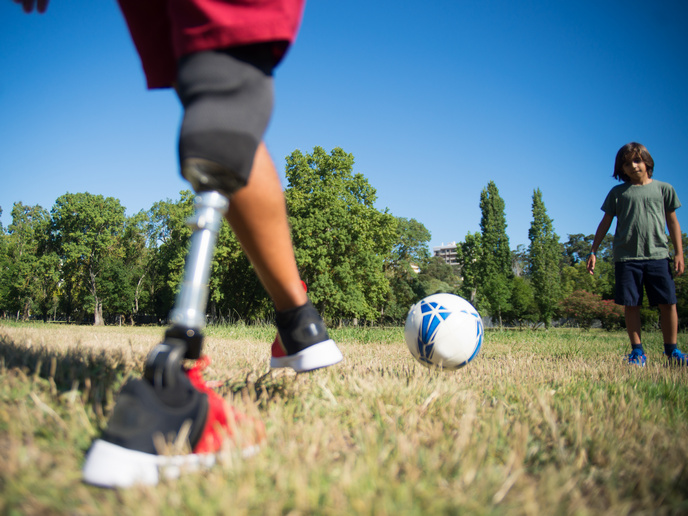Designing a better fitting – and performing – prosthetic leg
According to the World Health Organization(opens in new window), there are over 25 million lower limb amputees, many of whom use prosthetics to get around. While these prosthetics have done wonders in terms of increasing mobility and quality of life, they are far from perfect. In fact, 35.3 % of amputees report being dissatisfied with their prosthetic in general, while 40 % have difficulty walking even 50 metres. “Add these statistics up and what you get is a clear need for improved prosthesis performance,” says DeJiu Chen, an associate professor at Sweden’s KTH Royal Institute of Technology(opens in new window). With the support of the EU-funded SocketSense(opens in new window) project, Chen is leading an effort to answer this need. To do so, he’s using emerging technologies such as smart sensors, artificial intelligence and the internet of things (IOT) to build a better prosthetic socket.
Optimising the prosthetic socket
A key component in the modern prosthetic limb is the socket, the part that connects the device to the amputee. According to Chen, for the prosthetic to function, the socket must not only fit properly, but also be able to carry the correct load, provide the right operational stability, and guarantee control. “Designing and optimising a prosthetic socket requires a keen understanding of the actual intra-socket operational conditions,” explains Chen. “This, however, is a difficult task due to the inherent complexity and restricted observability of a socket in operation.” This is where technology comes into play. “Using intelligent sensors, the SocketSense solution can effectively monitor and analyse the dynamic operational conditions within prosthetic sockets that have otherwise been unobservable,” adds Chen. “The end result is a better fitting – and performing – prosthetic leg.”
Cutting-edge technologies
What makes the SocketSense solution so groundbreaking is its use of a variety of cutting-edge technologies. This includes flexible printed wearable electronic sensors that can be applied directly to the socket and measure such key operational conditions as pressure and friction. The solution employs machine learning and artificial intelligence methods. “Combined with statistical analysis, these technologies allow us to conduct advanced estimates of residual limb conditions, which have traditionally been very hard to predict,” remarks Chen. SocketSense also features advanced biomechanical analysis for limb diagnostics and prognostics, a decision support system for optimising socket design, and integrated software services for data acquisition and analysis. Furthermore, the project developed a novel robotics platform, referred to as mechatronics-twin, to serve as the analytical replica for enabling more effective analysis. “This robotics approach to exploring complex human-socket interactions means we can model and simulate behaviour virtually, so the amputee does not have to undergo potentially stressful experiments,” notes Chen.
Sockets tailored to user needs
With the system being tested and validated via lab tests and pilot and clinical trials conducted in Iceland, Spain and the United Kingdom, the project partners are currently exploring opportunities for further maturing the technologies and advancing them towards marketisation. “By integrating a wide range of technologies and scientific methods, we’ve successfully developed an innovative, intelligent, IoT-based system featuring customisable intra-socket sensors, cloud-based data collection, and advanced operational analysis,” concludes Chen. “But while the technology may be impressive, what we are most proud of is what it does, namely, allowing us to create prosthetic sockets tailored to an amputee’s individual needs.”







